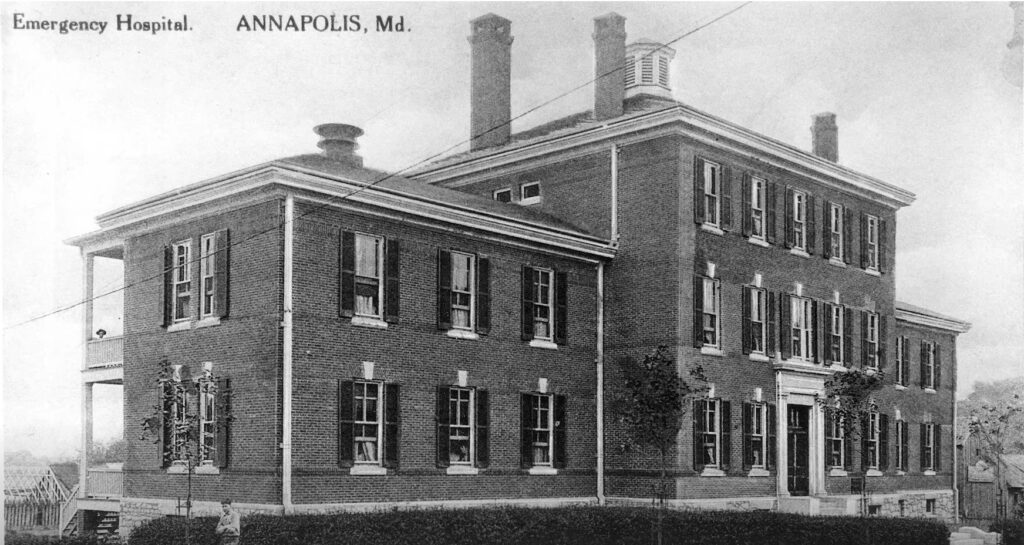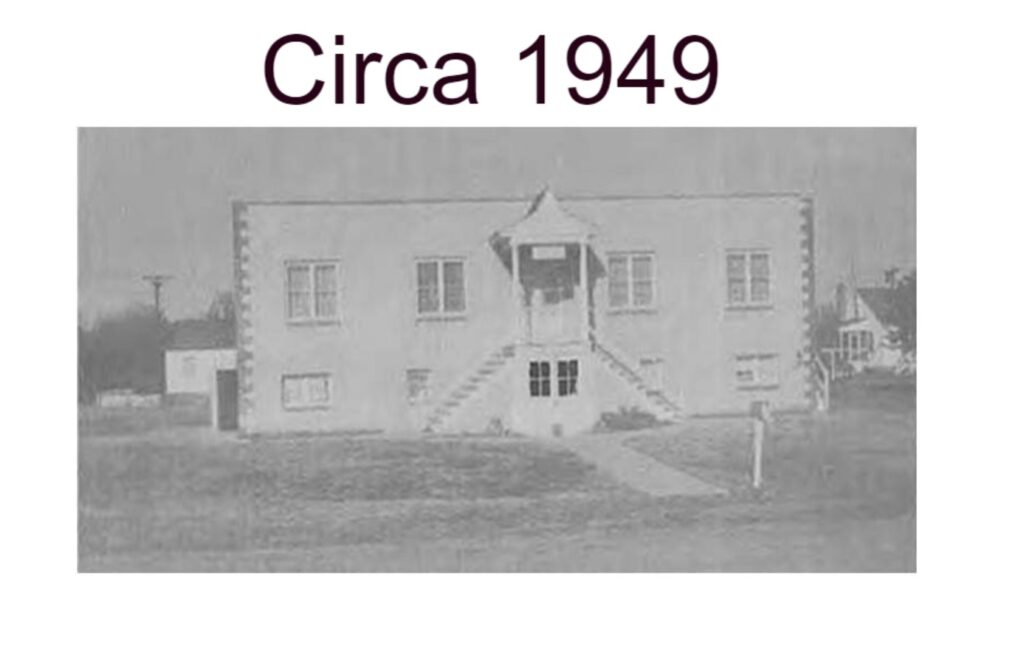The Annapolis Emergency Hospital opened its doors on July 18, 1902, at Cathedral and Franklin streets in downtown Annapolis. The 11-bed facility initially operated out of former Mayor Edwin Seidewitz’s home. As the city grew, a new building opened on the same block in 1910 and included operating rooms, three six-bed wards, nine private rooms, and a small children’s ward. The first woman physician, Dr. Frances Edith Weitzman, joined the hospital staff in 1912 and organized the hospital’s first maternity ward. Emergency services were provided at this location until the hospital moved all of its operations to the Jennifer Road facility in December 2001.
Medical care was not the same for all citizens however. Dr. William Bishop, a prominent African American physician, was one of the hospital’s founding ten physicians, but after he died in 1904, the hospital stopped accepting Black patients for a time. The Black community had more limited access to healthcare in general and relied upon local folk knowledge, home-based remedies, and midwives. During segregation, the Annapolis Emergency Hospital maintained segregated wards and did not provide maternity care for Black women.
Other doctors, community members, and institutions stepped to provide medical care for the Black community. The Parole Health Center, a historic Landmark in the City today, began its work in 1938, operating out of the Cecil Memorial United Methodist Church one day per week. In 1946, Black physician Dr Theodore Johnson, opened a clinic with a maternity ward on Northwest Street in the Old Fourth Ward of Annapolis. In 1949, the purpose built Parole Health Center opened its doors. Dr. Faye Allen, worked alongside her husband Dr Aris T Allen, provided health care at the Parole Health Center, through her job within the Anne Arundel County Health Department, and out of their private practice.
As the Allen’s worked towards more equitable health care for the African American community of Annapolis, just a few miles away, was the State-run Crownsville Hospital. In 1910, the same year the City of Annapolis opened the doors of a new state-of-the-art Emergency Center, the legacy and infamy of Crownsville and its approach to mental health treatment were just getting started.
In the early years, a misguided model of forced patient labor was employed as “Institutional Therapy.” As the Civil Rights era unfolded and under new leadership, such as Dr. George Phillips, who championed community care units, Crownsville found a new way forward, until it was closed in 2004.
We should all be thankful that, with the evolution of healthcare across the City and County in the past 125 years, a simple illness, a broken bone, or childbirth is rarely a life-threatening event.
It’s hot out there this week, so most of our links are virtual– Explore our local history from your computer- in the AC!
Where to learn more:
- The Historic Parole Community and the Landmark Parole Health Center are part of a fun Parole Scavenger Hunt. Storyboards help flesh out the stories of this community nestled between Forest Drive, West Street and Chinquipin Round Road.
- Visit the newly installed storyboard panels at the Crownsville Memorial Park- on the corner of Crownsville Road and North Street, to learn about mental health and evolving treatments at the Crownsville Hospital.
- For a virtual photo tour of the Crownsville Hospital Campus today, check out this google earth virtual tour!
- See this summary of the history of the Annapolis Emergency Hospital (U.S. National Park Service)
- Check out this Historic Annapolis video about the founding of the Annapolis Emergency Hospital: https://streamable.com/rz6477
- Take a virtual tour of the Old Fourth Ward in Annapolis, where Dr. Theodore Johnson opened a clinic with a maternity ward for Black women on Northwest Street.
The Annapolis Emergency Hospital ca 1910.

The Parole Health Center

Crownsville Hospital Center today.

The Chesapeake Crossroads Heritage Area is a Maryland Certified Heritage Area that celebrates the history, culture, and natural beauty of Annapolis and across Anne Arundel County. A 20-plus year collaboration between Anne Arundel County, the City of Annapolis, and the Maryland Heritage Area Authority, we connect visitors and residents to over 60 incredible destinations, from world-class museums and historic homes to scenic parks, trails, nature preserves, and vibrant arts centers.
Looking for a fun way to get the family out and exploring this summer? We invite you to take part in our 2025 Historic Summer Bucket List Challenge, a fresh take on summer fun that combines learning, adventure, and memory-making. Visit our website ChesapeakeCrossroads.org, to explore a full list of attractions. Get started checking items from the Historic Summer Bucket List!
